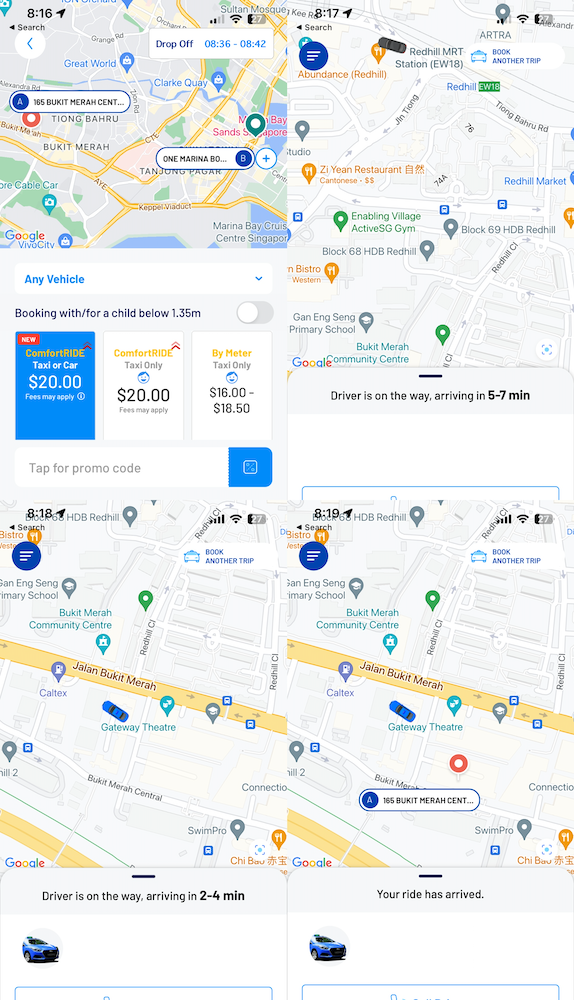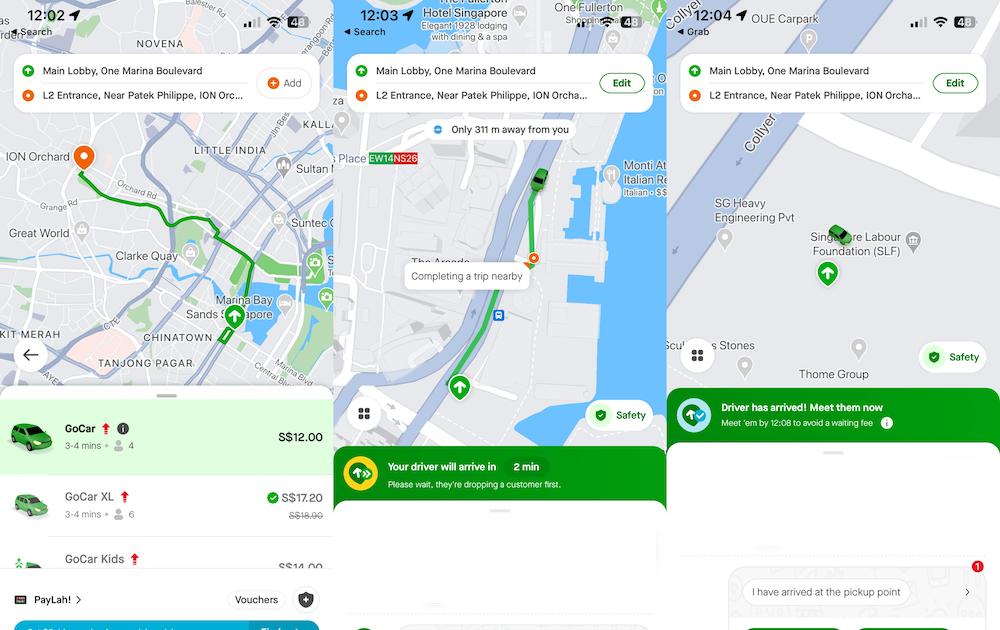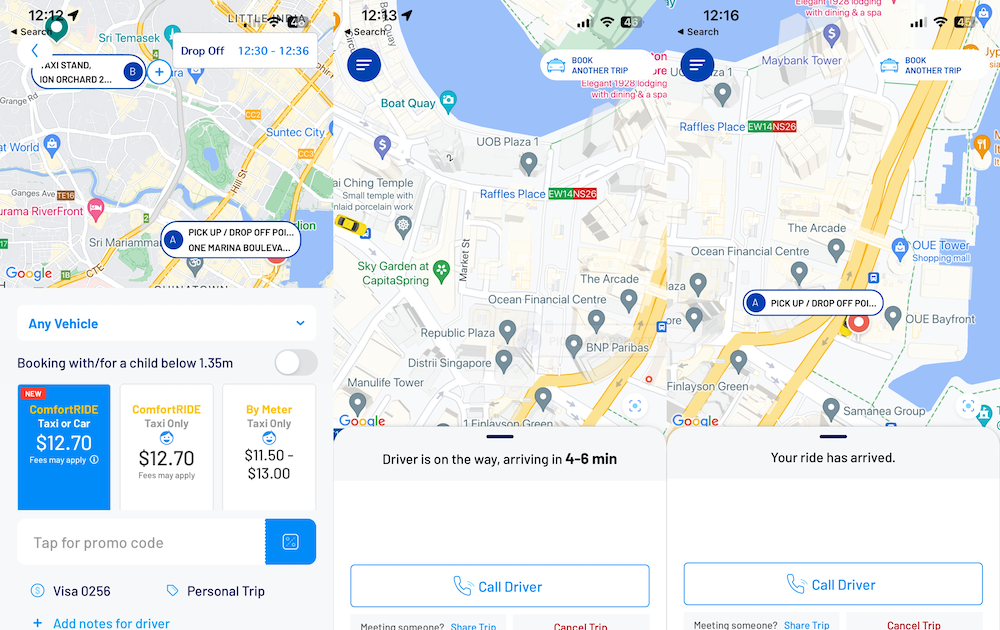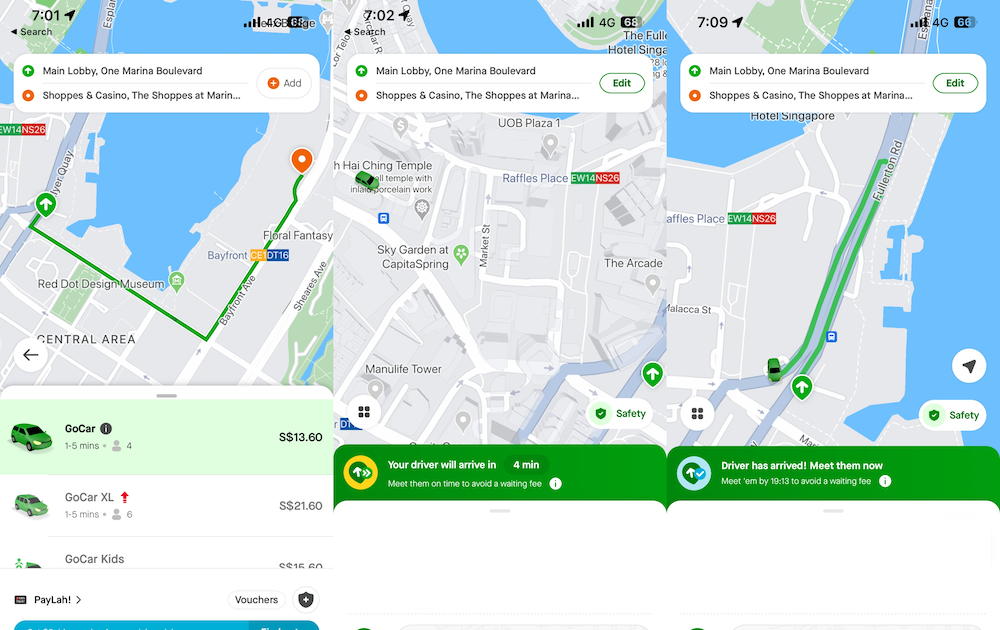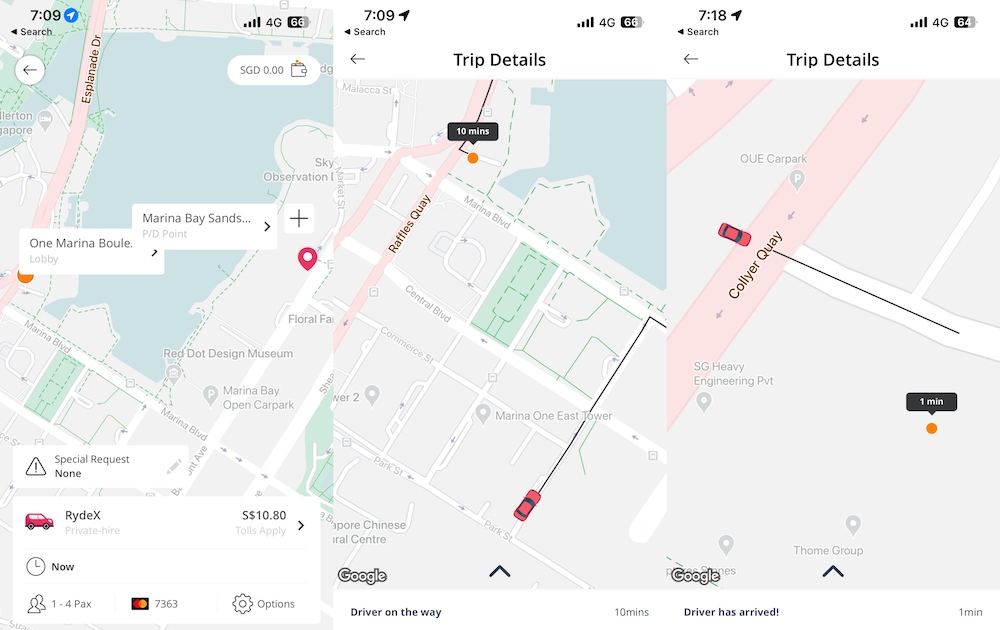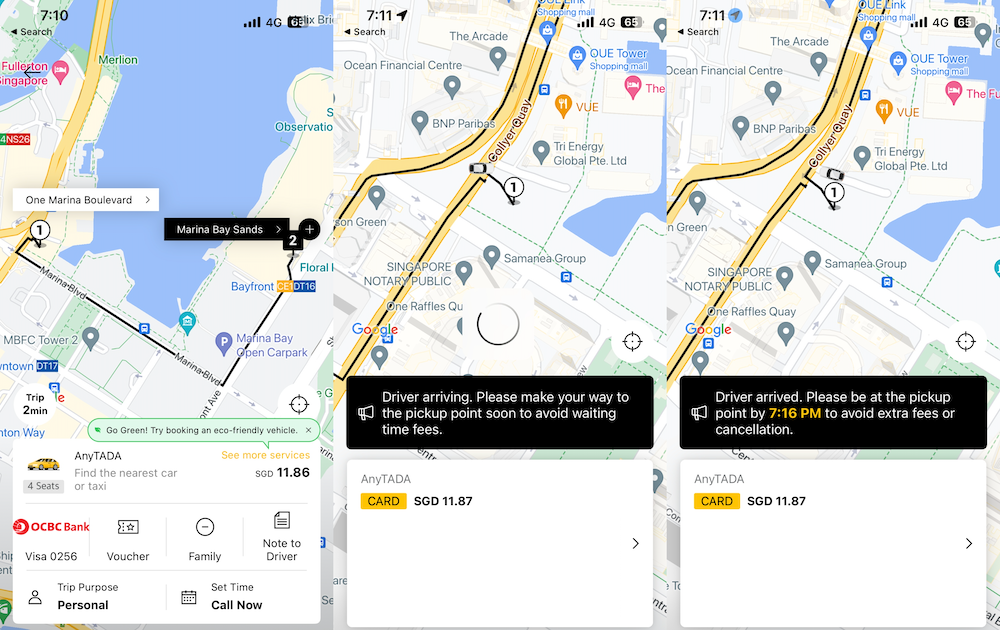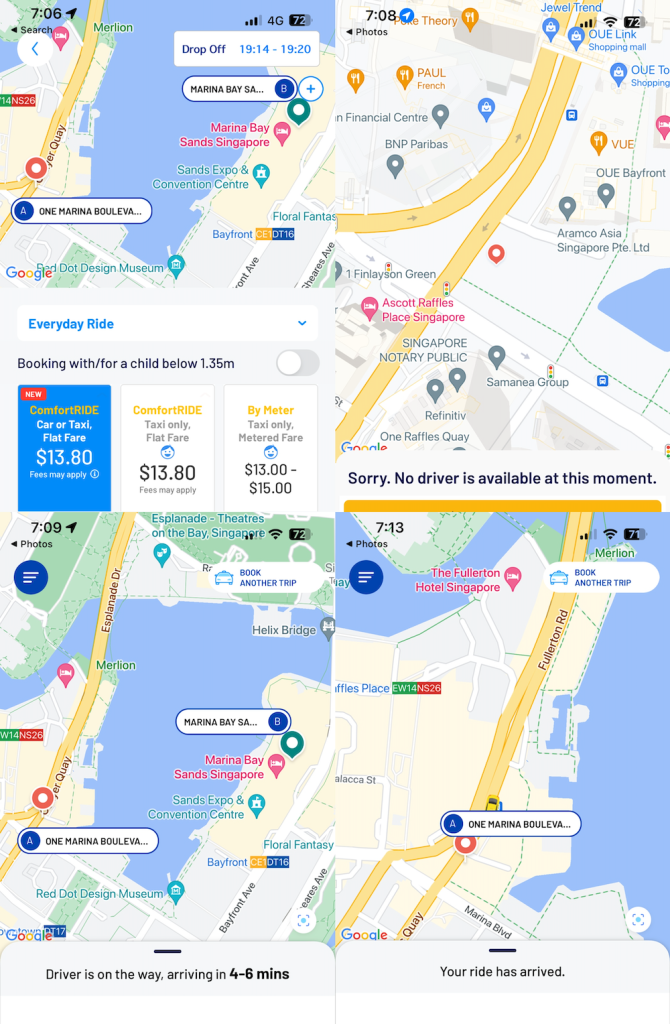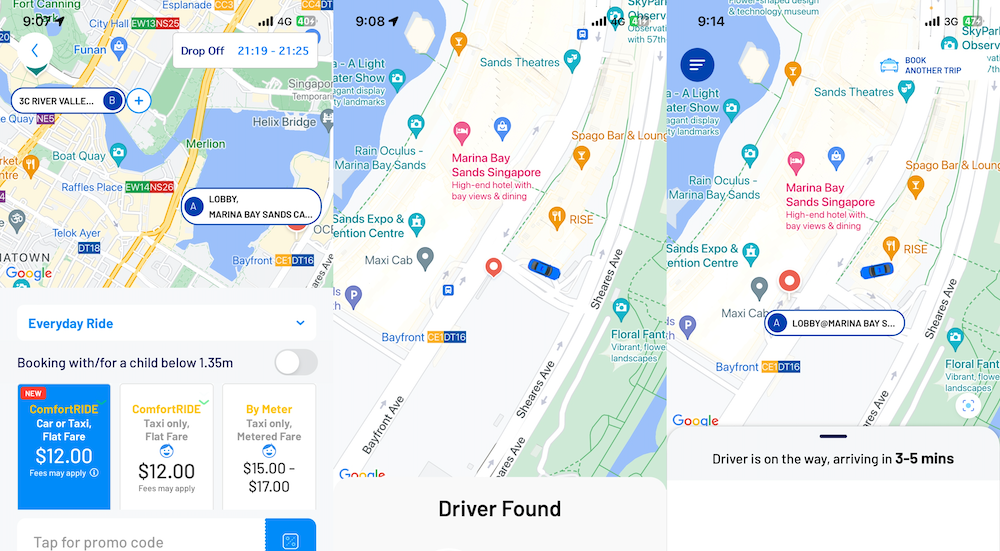Shakes to gelato: These S’porean millennials invested $100K to open a coconut dessert store
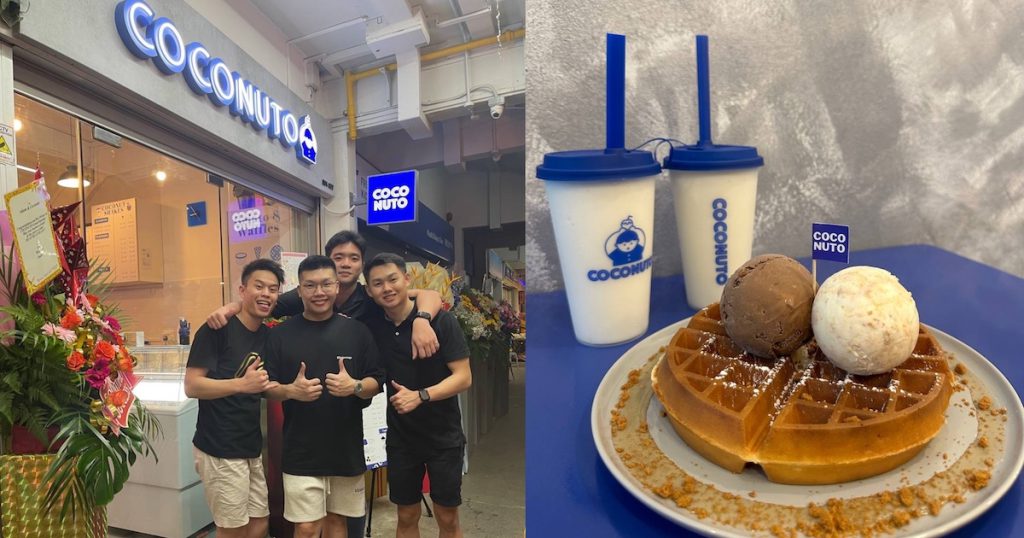
In a bustling city like Singapore, it’s hard to stand out in the competitive F&B industry, but these four friends have managed to carve a niche for themselves with their coconut-based desserts.
Kenneth Lim, Nicholas Tan, Chan Hao Yuan, and Adam Tan are long-time friends from secondary school, who often played basketball together. After graduation, they each took on different career paths — financial services, IT, economics — but their love for coconut have brought them together again.
The four friends had gone on a trip to Bangkok’s Chatuchak weekend market and tried out the signature coconut ice cream there, which was refreshing to have in the hot and humid climate. They wanted to expand on it and sell coconut-based desserts in Singapore, seeing that there’s already an existing demand here.
Furthermore, as dessert lovers, they often hunted for new and exciting local supper spots, so they wanted their upcoming venture to be a midnight dessert spot. This was what prompted the founders to start up Coconuto.
They opened their first store in Yishun

The early days of setting up the company were filled with challenges, as the founders had to learn everything from scratch, since they had no prior knowledge or experience in the F&B industry.
“We started from the basics like the registering the company, securing a food shop license, and attending basic food hygiene training programmes,” said Kenneth.
“We sat down to research [the market], such as analysing location and product lines for our menu. We also sought guidance from other friendly F&B business owners, who shared with us some tips and measures to set up the food business.”
Before adding products to their menu, they would reach out to friends and families, as well as members of the public like local university students, to sample their products. Even till today, they continually gather feedback from their customers to further improve on their products and provide the best experience for their customers.
Despite the challenges, the founders overcame them and opened their first store in Yishun in March last year. Kenneth reasoned that they chose Yishun because they wanted to be in the heartland neighbourhood that’s popular for dessert stores that open till late.
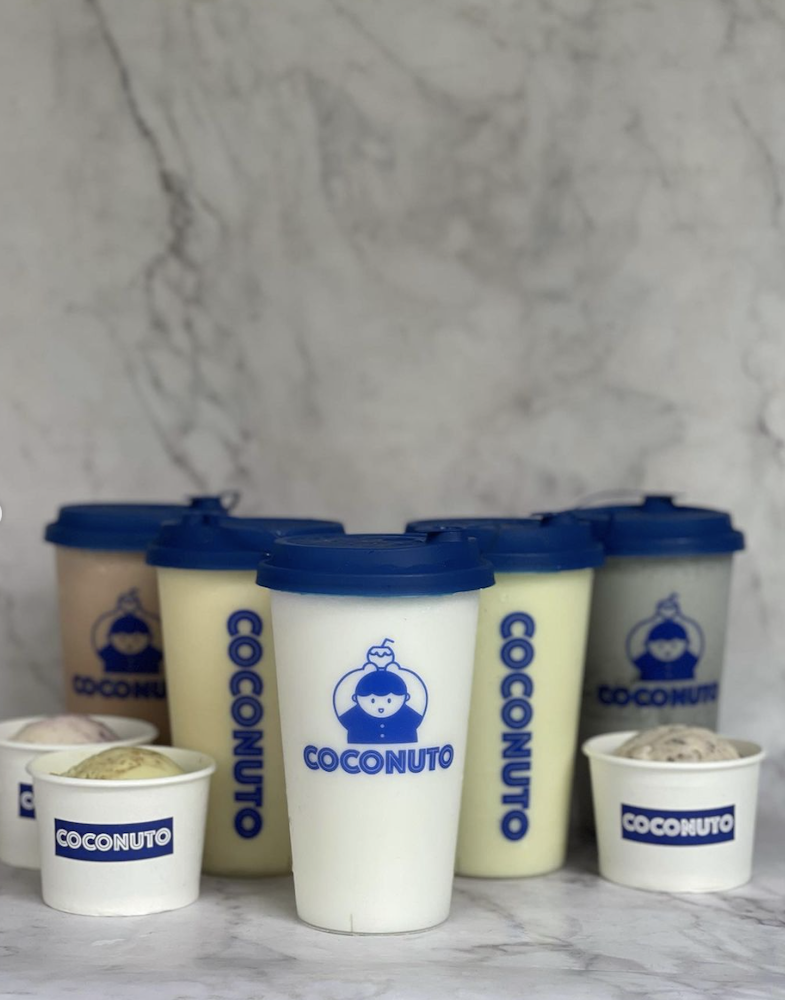
They sell refreshing coconut shakes, freshly made waffles, and indulgent coconut-based flavoured gelato ice cream, which is infused with traditional desserts.
Some of their unique gelato flavours include Mango Sticky Rice, Toasted Coconut, and Hey-bye (black glutinous rice). Their most popular products are the Lotus Biscoff coconut shake, and their waffles paired together with milk gelato with toasted coconut flakes.
Kenneth expressed his vision for Coconuto to be the go-to place for coconut-based desserts in the heartlands, and hopes that people will be attracted from all over Singapore to try their offerings.
Expansion is on their business map
During COVID-19, many businesses struggled to stay afloat, but the founders saw this moment of crisis into an opportunity. They took a leap of faith and started mapping out their business idea during the pandemic period.
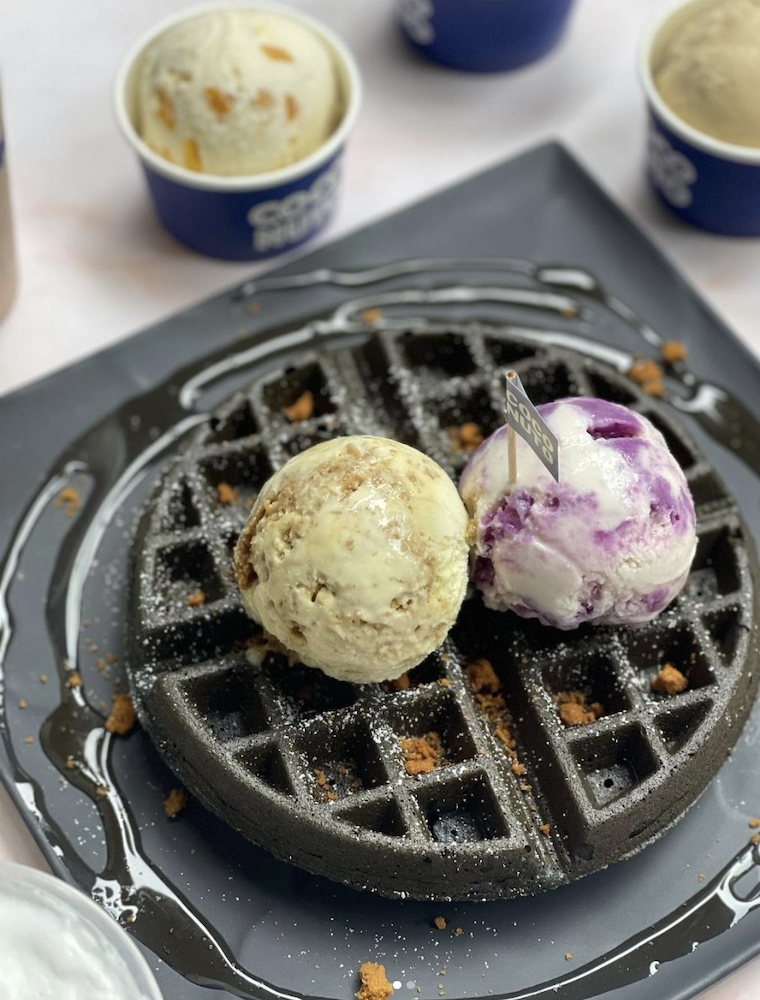
The young entrepreneurs — aged between 26 and 29 — pumped in an initial investment of S$100,000 into the business, and are optimistic that they would be able to break even within two years.
“We understand in F&B, and as a new startup, it would take a longer time [to gain] acceptance and grow,” noted Kenneth.
On their grand opening day, Coconuto served a record number of customers, and they also managed to partner with and sponsor a few university camps with their coconut shakes.
While some may consider coconut shakes and desserts to be a mere food trend, Kenneth believes that they would be able to gain an edge as they continually create new products, which gives them “push and relevancy” in this market.
Looking to the future, Coconuto plans to expand their retail footprint to the four different regions of Singapore so that customers don’t have to travel all the way to Yishun to enjoy their offerings.
Featured Image Credit: Coconuto
Also Read: Pickled sashimi? This S’pore startup makes own shoyuzuke – sold over 25K jars in first year
Open letter signed by tech leaders calls for a pause in AI development and better regulation

Key figures in the artificial intelligence (AI) industry have signed an open letter urging the suspension of powerful AI systems, due to the profound risks they pose to humanity.
Twitter CEO Elon Musk, Apple co-founder Steve Wozniak, and Pinterest co-founder Evan Sharp are among those who want the training and development of AIs above the capability of GPT-4 to be halted for a minimum of six months.
According to the open letter, AI systems are becoming increasingly human-competitive at general tasks, and the development of nonhuman minds could eventually outnumber and outsmart humans, putting our civilisation at risk.
To address these risks, they called on AI labs to pause the training of these AI systems, and to come together with individual experts to develop and implement shared safety protocols for advanced AI design and development. These safety protocols should be rigorously audited and overseen by independent outside experts.
If this pause cannot be enacted quickly, they urged AI developers to also work with policymakers to “accelerate the development of robust AI governance systems.”
These should include new and capable regulatory authorities to oversee and track highly capable AI systems, a robust auditing and certification ecosystem, funding for AI safety research, as well as well-resourced institutions for coping with the economic and political disruptions that AI will cause.
The open letter emphasises that it is not calling for a pause on AI development in general, but rather, a call to step back from the dangerous race to ever-larger unpredictable black-box models with emergent capabilities.
AI research and development should instead focus on making today’s powerful, state-of-the-art systems more accurate, safe, and transparent.
It is essential to have guidelines in place for AI development
Considering the almost-boundless potential of AI, it’s no surprise that tech giants such as Meta and Microsoft are racing to create more capable AI models and gain first mover advantage in the space.
But what’s important to note is that these companies exist with a main purpose to make money. Any company that prioritises social benefit over profit would most likely cease to exist.
This is why it is essential to have regulations in place for AI development, as companies race to put out AI tools with their own interests in mind.
Currently, Southeast Asians including Singaporeans are ambivalent on the positive and negative aspects of AI, particularly with regards to how these tech giants are viewed, according to a Blackbox-ADNA survey.

Most of them seem to think that Microsoft, Apple, Alphabet (the parent company of Google), Meta and Open AI, would develop and utilise AI responsibly.

On the other hand, Meta comes in first as the company that would least likely utilise AI responsibly. This comes after Mark Zuckerberg’s announcement of the company’s pivot into AI.
However, that being said, the AI industry is still very much in its infancy, which makes it way harder to regulate. Regulation at a time where the industry is rapidly growing could also impede innovation.
In fact, a study from Stanford University found that attempts to regulate AI as a whole would be “misguided”, as there is still “no clear definition of AI”, and the risks and factors involved can vary greatly across different fields and industries.
The topic surrounding the regulation of AI is a complex one, but what’s for sure is that AI would definitely require regulation, sooner or later.
Featured Image Credit: The Siasat Daily
Also Read: Exploring the dark side of ChatGPT – are your conversations safe on the AI chatbot?
HDB households to get U-Save vouchers, S&CC rebates in April as part of first GSTV payout

About 950,000 Singaporean households living in Housing Board flats will receive their quarterly U-Save Goods and Services Tax (GST) Voucher and service and conservancy charges (S&CC) rebate in April, according to the Ministry of Finance (MOF).
The payments are part of the enhanced permanent GST Voucher scheme and Household Support Package announced at Budget 2023 to help Singaporeans tide over higher inflation and cushion the impact of the GST rate increase.
The total U-Save vouchers each eligible household will receive in the 2023 financial year starting in April range from S$440 to S$760, depending on the flat type. This amount is the same as in FY2022, which is double the households’ regular U-Save vouchers.
The rebate for S&CC, which are fees for estate maintenance, ranges from 1.5 months to 3.5 months.
These payouts are designed to help lower- and middle-income Singaporeans and will be credited directly into households’ S&CC accounts managed by their respective town councils.
This financial year’s S&CC and U-Save payouts amount to eight to 10 months’ worth of utilities bills for the average household living in a one- or two-room HDB flat, and about four to six months’ worth of utilities bills for the average household living in a three- or four-room flat, MOF said.
The first payout in April will range from S$55 to S$95 for the U-Save vouchers and 0.5 or one month for the S&CC rebate.
The payouts will be given in four tranches – in April, July, and October this year, and January 2024.
Featured Image Credit: Mr Brown
Also Read: Budget 2023: S’poreans to get extra cash of up to S$650 under AP and S$100 more CDC Vouchers
Craft Health: Meet the S’porean founders behind the first 3D-printing medicine firm in SEA
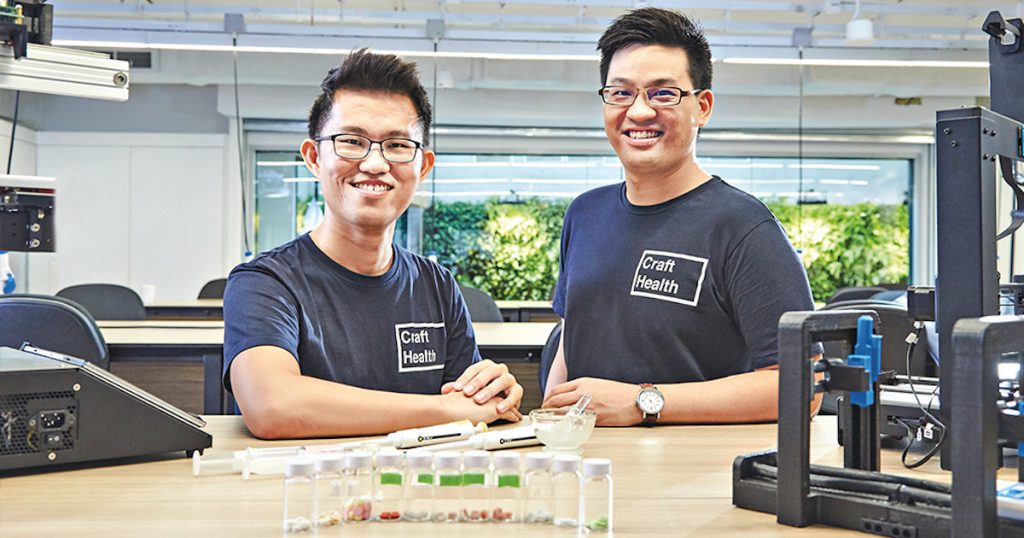
As pharmacists, Goh Wei Jiang and Lim Seng Han have long noticed a common issue among elderly patients. An overwhelming number of medications are being prescribed for multiple diagnoses – mainly diabetes, hypertension, and high cholesterol.
These patients would leave the hospital or neighbourhood polyclinic after each visit with bags of pills and a complicated regimen to follow, which often led to confusion and mistakes.
Not content with just observing the problem, the duo decided to steer away from the traditional path of academic publishing and set out to solve a problem towards the end of their PhD studies at the National University of Singapore (NUS).
Seng Han’s expertise in 3D printing sparked an idea: Could they combine the active ingredients of various medications and put them altogether in a single pill?
They later secured a small research grant to test whether their theory works, and as it turns out, it does.
So right after they completed their respective theses, they enrolled themselves into the NUS Graduate Research Innovation Programme (GRIP), a three-month structured curriculum that guides participants through a startup process.
“Essentially, GRIP is like an incubator,” explained Wei Jiang. “We were the first cohort of participants when it was launched in 2018. It gave us ample opportunities to speak with many stakeholders – hospital administrators, doctors, clinicians, pharmacists, patients, among others.”
“After weighing all the evidence, we concluded that both the demand for better medication management and solution (3D printing medicine) are real, and thus, Craft Health was born.”
The many challenges to make a new technology work
Craft Health is now poised to change the game in pharmaceutical care.
Though promising, Wei Jiang admitted it was a challenge to woo investors in the early days. Back in 2019, 3D printing was still a foreign concept to many.
“Most of the time, it’s just Seng Han and I with our laptops. We didn’t have much to show and convince people. So, they were sceptical about what we could offer,” he added.
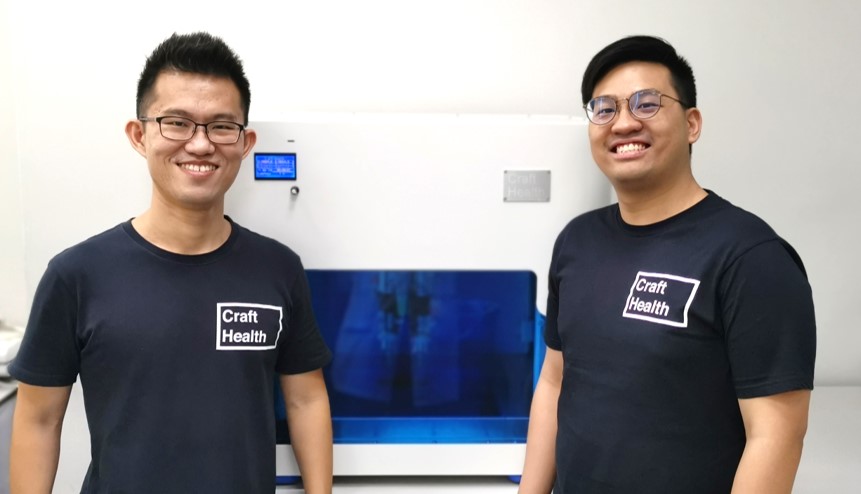
Some investors were excited about Craft Health being the first and only 3D printing medicines and nutraceutical company in Singapore and Southeast Asia. However, the cautious ones wanted to know if 3D printed medicine is something that had been done before so they could pattern match Craft Health’s success rate.
Alas, the irony means out of all the 80 potential investors that Wei Jiang and Seng Han spoke to, only one was willing to take a leap of faith in their company. And just when the duo thought everything is heading in the right direction, the COVID-19 pandemic struck.
In the beginning, we do possess a certain degree of naivety. We thought getting the 3D printing technology up and running is the only problem we must solve. It turns out this is only the start.
– Goh Wei Jiang, co-founder of Craft Health
Wei Jiang and Seng Han soon discovered more challenges lie in managing the logistics of mass production of 3D printing medicines, educating potential clients on the key advantages of 3D printing, and ensuring Craft Health can deliver all its promises efficiently and safely.
But Craft Health’s secret weapon lies in the chain of workflow that they had developed to support the entire 3D printing drug delivery process.
A one-stop shop for 3D printing medicines and supplements
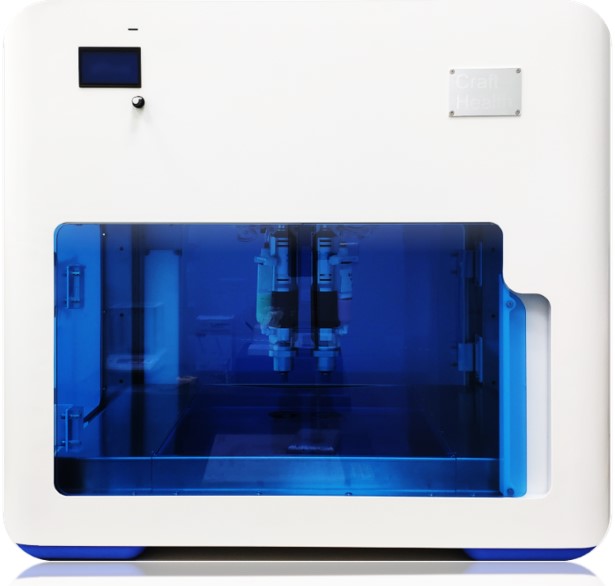
Primarily, it starts off with the 3D printers (CraftMake). These in-house hardwares are designed to perform 3D printing at room temperature and pressure, without the use of heat and UV light.
This ensures the active ingredients in each drug remain intact, allowing for the combination of different active ingredients and dosing in a single pill. Accompanying it is CraftControl or the software that instructs the 3D printers to rightfully print out the medications in the intended ways.
Craft Health can customise the active ingredients and release profile of medications to suit specific patient needs, whether for immediate or sustained release. As such, CraftBlends is the “recipe book” that carefully cooks up different formulations.
Lastly, all the information that is generated from or used by CraftMake, CraftControl, CraftBlends are stored in CraftDatabase. This archive system – one of the first in the world – allows Wei Jiang and Seng Han to better understand the interplay of various materials and factors, so they can 3D print more specialised or even personalised medicines.
For example, some active ingredients give medications an unpleasant taste. Craft Health can step in by 3D printing a multi-layer pill or a pill that encapsulates another pill to mask the taste. Likewise, the outer layer of the multi-layer pill can be tailored to protect from the acidic content of stomach and release its embedded content in the intestine for better absorption.
At the same time, Craft Health is also building on its nutraceutical arm.
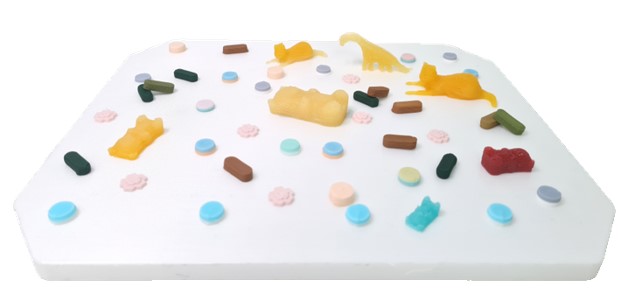
CraftBeads are 3D printed granules that offer a bespoke approach to supplementation. Instead of buying bottles of vitamins off the shelves and eat them one by one, CraftBeads can mix and match to create custom blends based on individuals’ supplementary needs.
On the other hand, CraftDelights is a 3D printed gummy side project that started as a sweet solution targeting paediatric patients, although it quickly earned fans among adults.
Again, because we 3D print these gummies without heat and UV light, that means we can incorporate things like probiotics. The technique also permits different shape, size, geometry and taste. That’s probably why people are excited about it, as they can see very highly personalised gummies being made.
– Goh Wei Jiang, co-founder of Craft Health
The regulatory hurdle of 3D printing medicines
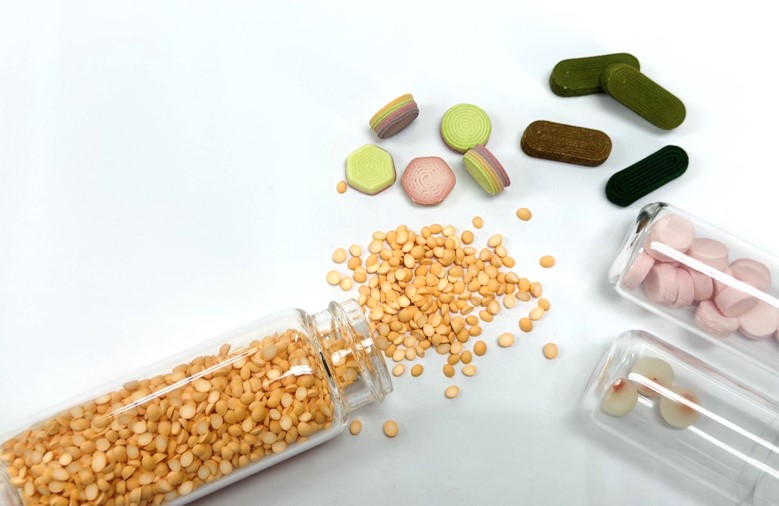
Presently, there is no regulatory framework for 3D printing medicines in Singapore and worldwide.
The limbo comes in how drugs are being approved in general. Typically, health authorities will approve a specific brand of medication that comes in a specific dose. A new consent is needed for any adjustments in active ingredients or dosage.
In the case of 3D printing medications when the combination of active ingredients and dosage becomes limitless, it’s impossible to officially register and green light every mix. As such, Craft Health is planning to overcome the hurdle via the compounding route.
According to Wei Jiang, compounding is a pharmaceutical practice that’s not very common in Singapore.
In some countries, patients can request certain ingredients to be added or removed from a particular medication that they are taking due to allergy or other medical reasons. In that case, pharmacists will have to specially “compound” the drugs for the patients.
Therefore, Craft Health is planning to do a small clinical trial at the end of this year with a public hospital. They want to prove that it’s just as efficacious for patients to take a 3D printed pill containing active ingredients from three different types of medications versus taking them separately.
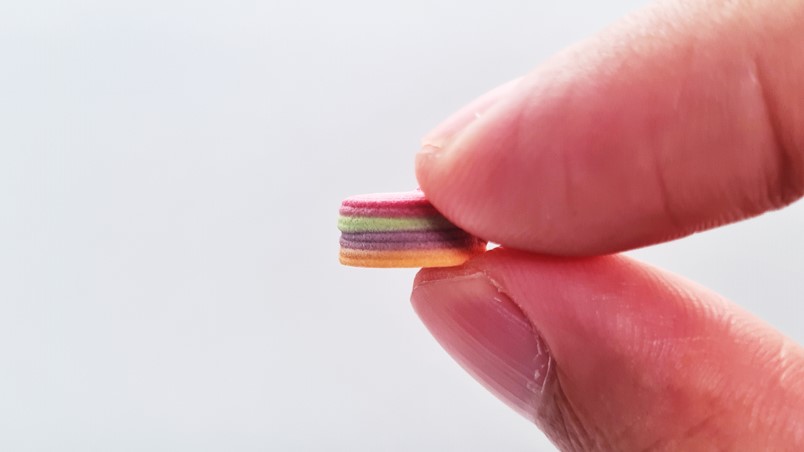
“It’s a very low bar for us to cross,” Wei Jiang said confidently. “But our rationale is to provide some preliminary evidence to the doctors that our products are safe and effective.”
Eventually, Craft Health hopes to develop a menu of 3D printing medicines so doctors can just prescribe off the list accordingly.
On taking a road less travelled
While it may still be years before Craft Health, and probably the whole 3D printing medication industry, arrives at their ultimate goals, the founders are glad it’s emerging as a pioneering and dominant player in the field.
“Establishing Craft Health as a deeptech spinoff from NUS is already a huge advantage. It shows that a reputable institution is backing up our technology. There are some validations that this is doable,” noted Wei Jiang.
As exciting as it seems, Wei Jiang also confessed being an entrepreneur means being exposed to many uncertainties that he would not have faced in the days working as a pharmacist.
Being an entrepreneur means everything is thrown at you at once. You must do everything, including fixing your own aircon in the office.
– Goh Wei Jiang, co-founder of Craft Health
Whether it’s the 3D printing technology itself, or the operation, business, and legal side of things, Wei Jiang and Seng Han had learnt a lot in the past four years, and they learnt them fast despite the steeo growth curve.
Indeed, like the dazzling array of prescription permutations that 3D printing medications and supplements can offer, 3D printing technology itself holds seemingly endless potential in the pharmaceutical and nutraceutical industries. The development is taking place so rapidly that there is not much time for us to be overwhelmed before a technology catch on us.
Featured Image Credit: National University of Singapore
Also Read: Art4Keep: This S’pore startup preserves your children’s creative artworks and turn them into a book
S’pore and M’sia introduce seamless cross-border payments via Nets and DuitNow QR codes
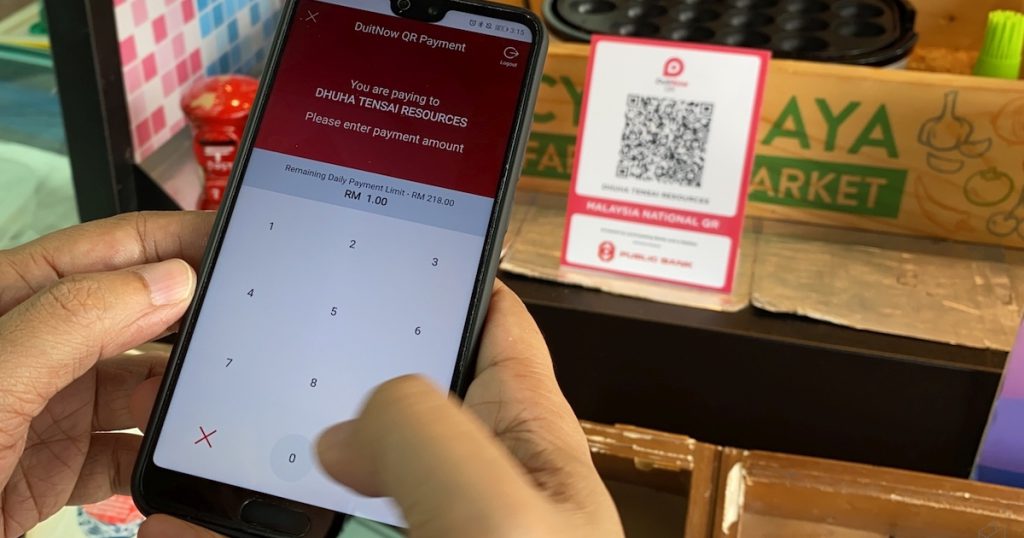
Cross-border payments between Singapore and Malaysia have been made easier with the launch of cross-border QR code payment connectivity, announced jointly by the Monetary Authority of Singapore (MAS) and Bank Negara Malaysia (BNM) today (March 31).
Customers of participating financial institutions can now pay for products and services at merchants by scanning physical Nets and DuitNow QR codes.
The participating institutions in Singapore are DBS Bank, OCBC Bank and UOB, while in Malaysia, the participating establishments include AmBank Malaysia, Boost, CIMB Bank, Hong Leong Bank, Malayan Banking, Public Bank, Razer Merchant Services, TNG Digital, and UOB Malaysia.
The payment linkage will also support cross-border online transactions for e-commerce.
Additionally, MAS and BNM are planning to roll out cross-border person-to-person fund transfers by the end of the year, allowing individuals to transfer money using a phone number via PayNow and DuitNow.
“This QR code linkage between Singapore and Malaysia is an important milestone in ASEAN’s journey towards seamless regional payments connectivity,” said MAS managing director Ravi Menon. He added that cross-border linkages like this would boost commerce beyond the borders of Singapore while allowing smaller businesses to access a wider pool of consumers.
The payment linkage is expected to provide merchants and consumers with a more efficient means of making and receiving payments, especially given pre-pandemic annual traffic between the two countries averaging 12 million visitors.
The cross-border payment connectivity initiative is part of MAS’s and BNM’s efforts to enhance payment connectivity between ASEAN countries and promote the region’s growth and competitiveness.
Featured Image Credit: SoyaCincau
Also Read: Sea joins the digital banking race with MariBank’s launch to the public on an invite-only basis
Time is money: Which ride-hailing app in S’pore will win the test in terms of price and speed?
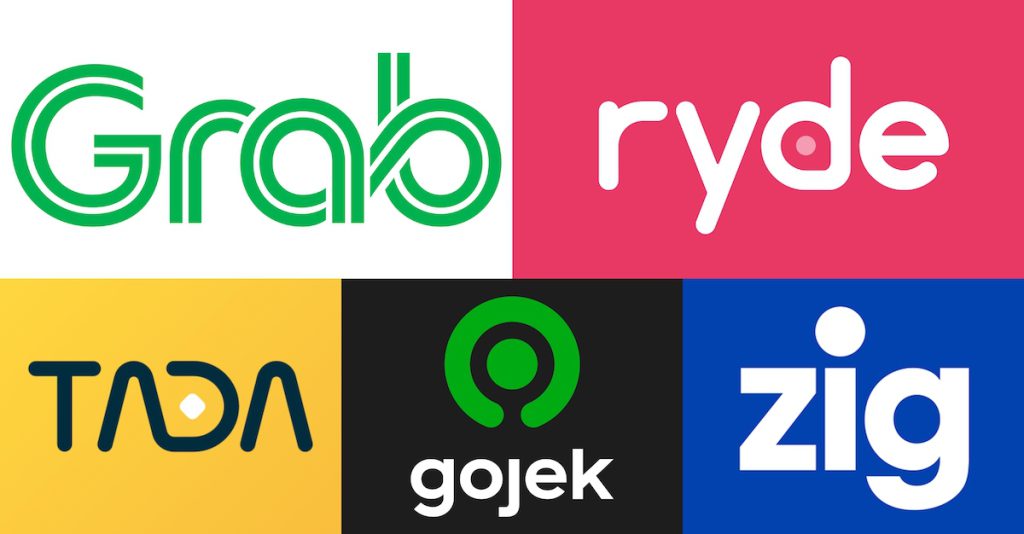
As the ride-hailing industry continues to evolve, the landscape in Singapore has become increasingly diverse.
Last month, we conducted a fare comparison test featuring Geolah, a new player in the market, and concluded that they offer the cheapest fares during peak/high demand periods. However, our Facebook readers have alerted us of their difficulties to secure a ride on Geolah’s platform.
As such, Vulcan Post has decided to carry out a new test to assess both fares and app reliability of ride-hailing platforms in Singapore, taking into account the ease of getting a driver and wait times from booking to car arrival this time. (Scroll to the end to skip to the verdict)
In order to conduct a comprehensive comparison, we booked rides on the five major ride-hailing apps in Singapore: Grab, Gojek, Ryde, TADA, and CDG Zig (by ComfortDelGro). We also attempted booking rides with Geolah ourselves, but were unable to secure a driver on all occasions, and thus have excluded them from this round of evaluation.
For this particular test, we selected five different pick-up and drop-off locations across Singapore – based on the typical day of a commuter (gleaned from the personal insights and experiences of our team) – and booked rides to these destinations at different times of the day.
(Disclaimer: Testing was done on a weekday, and fares shown exclude any prevailing promo codes/discounts. Driver details have also been omitted to protect their privacy.)
Before 9am: Morning commute to work
- Bukit Merah Central > One Marina Boulevard
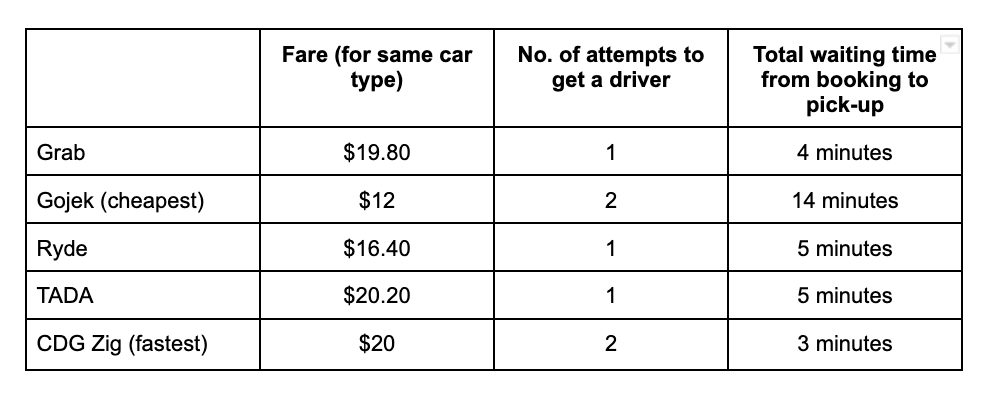
Around 12pm: Lunch meeting at town
- One Marina Boulevard > ION Orchard
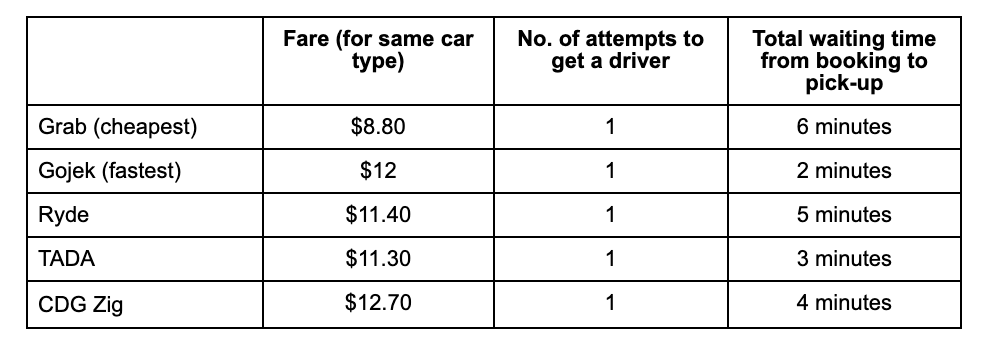
Around 3pm: Back to the office
- ION Orchard > One Marina Boulevard
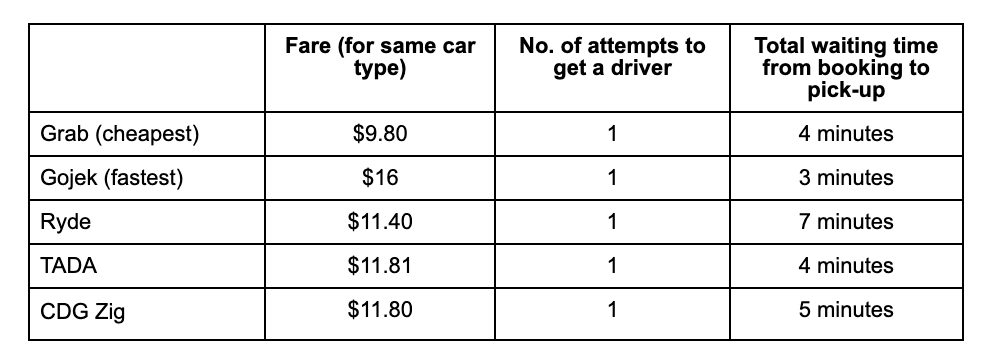
7pm: Dinner date
- One Marina Boulevard > Marina Bay Sands
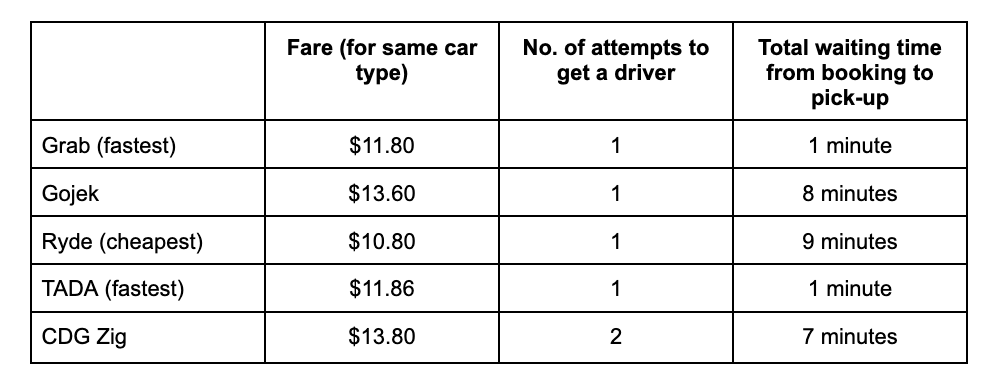
9pm: Post-dinner drinks
- Marina Bay Sands > Clarke Quay
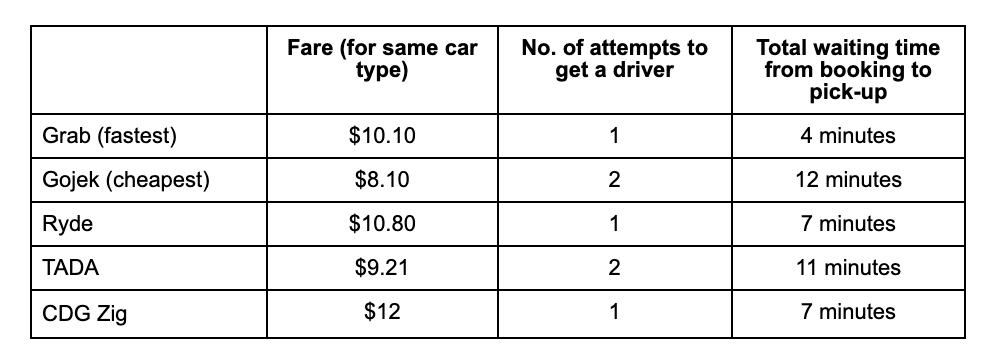
After midnight: Home after a late night out
- Clarke Quay > Bukit Merah Central
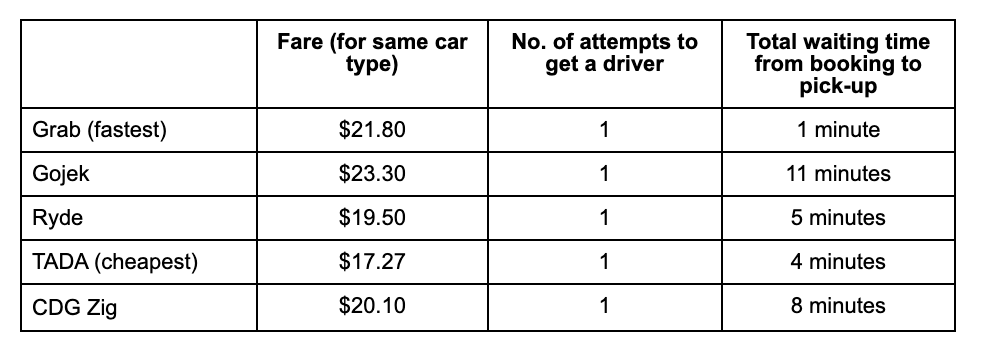
What’s the verdict?
Top 3 competitive fares: Ryde, TADA, Grab (all within the same range, differing by a few cents)
Top 3 shortest wait times: Grab, followed by TADA, then CDG Zig
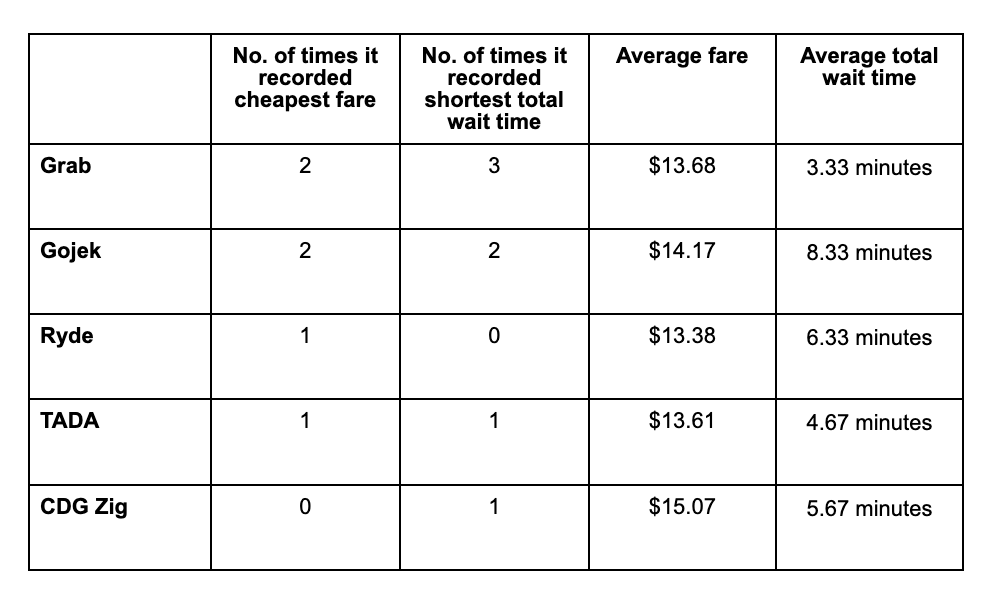
Fares
In two separate instances, Grab and Gojek offered the most competitive pricing, resulting in a tie.
Between the two, Gojek recorded a longer waiting time as it took two attempts to book a ride in both instances.
Meanwhile, TADA and Ryde recorded the cheapest fare for one instance, although the latter also recorded the longest waiting time in that particular instance. Despite this, Ryde had the lowest average fare among all the ride-hailing apps tested, followed closely by TADA and Grab.
Additionally, CDG Zig did not offer the cheapest fare for any instances.
It’s also worth noting that this test is conducted based on the standard ride option that selects the nearest car or taxi. That said, most of these platforms lack shared rides and carpooling options, unlike Grab (GrabShare and GrabHitch) and Ryde (RydePool and RydeFlash). As such, it is possible for users to get an even cheaper ride if they opt for these ride options.
Wait times
When it comes to speed, Grab leads the pack – recording the shortest total waiting time for three out of six occasions – followed by Gojek, which achieved it twice.
TADA and CDG Zig had the shortest waiting time once each, while Ryde did not emerge as the fastest in any instance.
However, it’s interesting to note that while Gojek managed to clock in the fastest timings for two instances, it still recorded the longest average wait time at 8.33 minutes among all the apps.

Furthermore, when we take the number of booking attempts into consideration, it was baffling to note that booking a ride on Geolah proved to be virtually impossible. Most of the time, no cars were available and nearby drivers were scarce.
In one instance, the app was buggy and didn’t even display fare pricing or allow bookings, creating a negative and frustrating experience for users in need of a ride.
While there is no clear-cut winner in terms of which ride-hailing app reigns in terms of price and speed, this test provides valuable insights into the ride-hailing industry in Singapore by highlighting the strengths and weaknesses of each platform.
From this test, Grab seemed to strike a good balance between competitive pricing (on par with Ryde and TADA) and efficient service (shortest average wait time among all the apps tested).
Regardless, we acknowledge that the results of each platform may vary for individual users. Ultimately, it is up to the users to decide which ride-hailing app best suits their needs, be it prioritising price, speed, or other factors such as shared rides or carpooling options.
With the range of options available in the market today, users can now make informed choices when they book their next ride.
Featured Image Credit: Grab / Ryde / TADA / Gojek / ComfortDelGro
Also Read: Geolah is S’pore’s newest ride-hailing app – how “affordable” is it compared to its four rivals?
Is your degree worthless in S’pore? MOM finds it’s not important in 64% of PMET vacancies

Disclaimer: Opinions expressed below belong solely to the author.
Singapore’s Ministry of Manpower has just released its annual Job Vacancies report for 2022 and it, of course, makes an interesting reading for all job seekers.
What struck me about it, however, is not the obvious dominance of the IT sector among the most newly-created jobs or the burning need for construction workers, as the city-state’s economy is rebounding from the pandemic.
Instead, the most interesting trend in the country commonly seen as conservative and risk-averse, is the rapid shift away from the conventional hiring practices — and the slow death of the university degree as the prerequisite to a good career.
Just look at this chart:
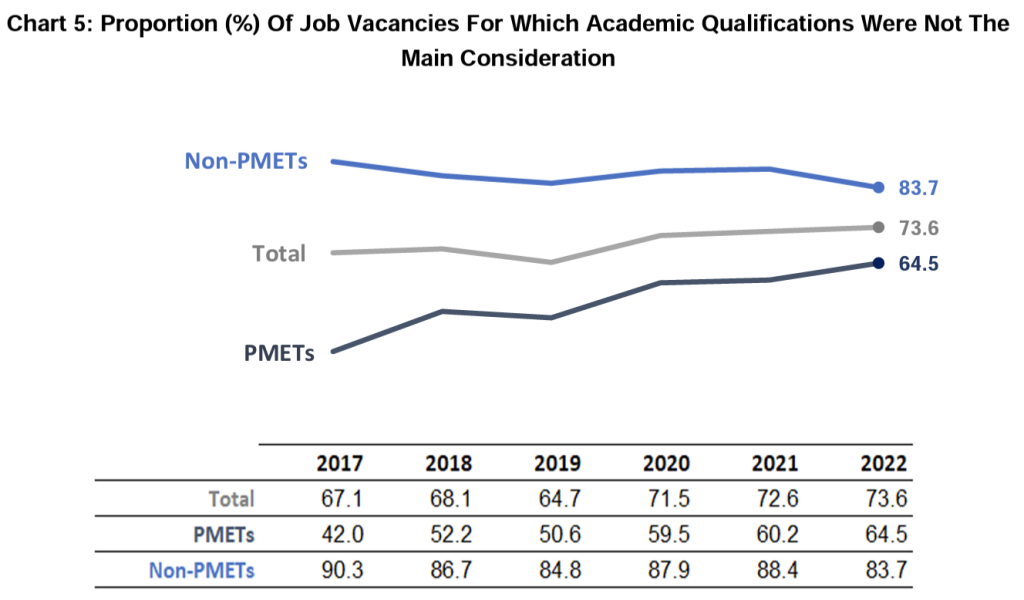
Not only are academic qualifications not a concern for employers in nearly two out of every three PMET vacancies on the market, but the pace of the shift is quite remarkable too — from a little over 40 per cent in 2017, to nearly 65 per cent in just five years.
It’s very nearly a reversal of proportions — from close to two-thirds in favour of candidates with strong degrees to nearly two-thirds who don’t really care.
Mind you, this has happened at the same time that the greater shift in labour force happened, seeing rising demand for qualified professionals over non-PMET workers:
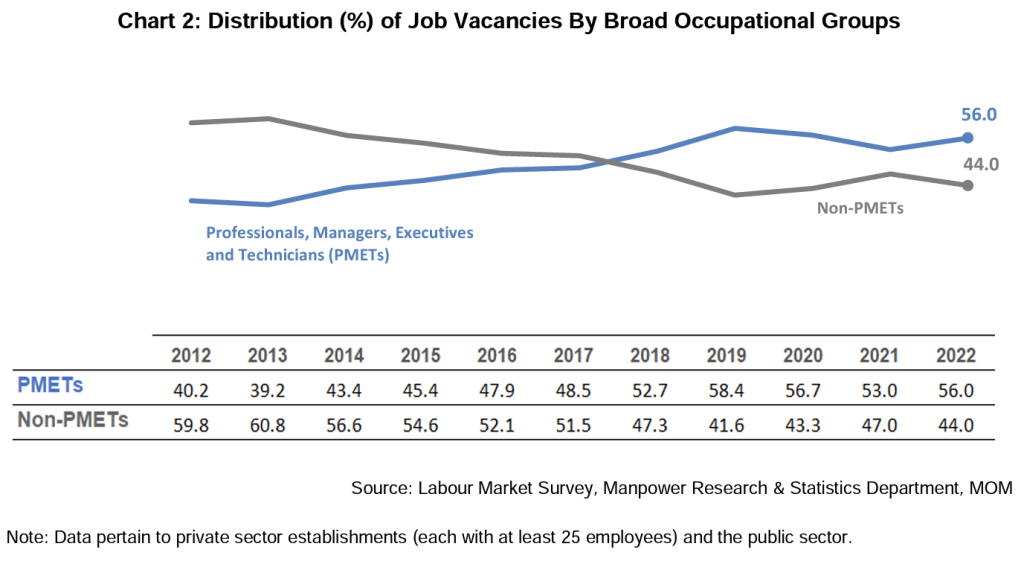
Five to 10 years ago, Singapore was still thirsty mainly for lower-end labour — people who could perform menial tasks, which did not require advanced skills.
Since 2018, however, annual demand for qualified professionals has increased in comparison to simple workers, leaving more of these positions unfilled.
In fact, around one out of five PMET vacancies were left empty after more than six months on the market, suggesting either a shortage of talent or pickiness among the local workforce (or both, perhaps).
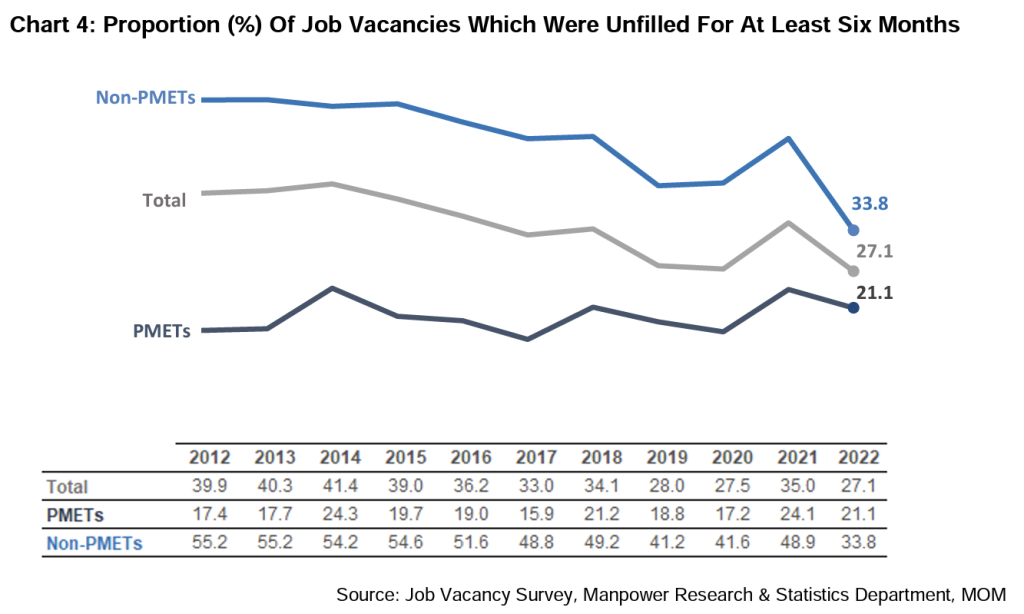
And all of this is happening despite the fact that academic qualifications are no longer a major concern among most employers.
Top PMET vacancies in 2022
In its report, the ministry compiled a list of top 10 vacancies among PMET professions last year. As you will notice, for four out of the top five, academic qualifications are marked as not being a main consideration for the company.
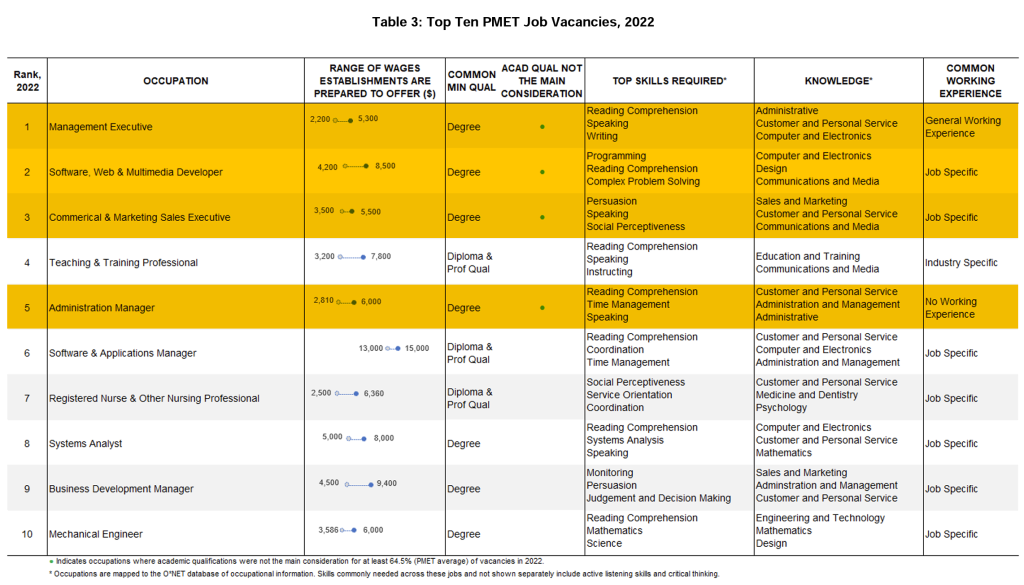
It’s not only in the hippie, laid-back world of modern IT companies that papers matter far less than your skills, but in good old corporate world as well.
Management, sales or administration executives are sought mainly for their real life skills, not the paper or a title obtained at some recognisable university (be it at home or abroad).
There are, of course, professions where a degree might be a legal prerequisite to starting a job, particularly if it involves responsibility over things that may affect human lives.
But I think even in these professions, they are merely a bureaucratic stepping stone, a necessary hurdle that candidates must cross, and not necessarily a major competitive advantage versus other applicants.
How much is your degree worth these days?
It’s not worthless, but it sure is worth less.
There are a few reasons for that specific to Singapore, besides the global decline in respect for academia and the skills it equips people with for the very dynamic world we live in.
Singaporean universities used to trail the world as the country tried to catch up, but today, they rank among the global top. This means that the relative value of travelling out to study abroad before returning to the local workforce bearing an American or British degree has greatly diminished.
In other words, the pool of people with top tier education has increased to the point it covers virtually all Singaporean graduates, regardless of whether they studied in the country or outside of it.
It means that other factors have had to come into play for recruiters to make their hiring decisions.
A candidate with any working experience will be better than a candidate with no experience, even if he comes from one of the world’s best schools.
Besides previous jobs, any awards, internships, references, project portfolios contribute to a much more unique and harder to replicate profile of an employee than paper qualification that essentially needs just a monetary outlay and surviving the studies for their duration — what millions of people do each year all over the world.
That said, I don’t think we’re at a point where you can completely disregard tertiary education and simply try to learn things on the job as a young 20-year old — although I’m sure it can (and does) work for many people.
A decent degree is still good to have, if only as a bullet-point in your CV. It also remains useful as a networking experience of meeting like-minded peers and building relationships that may become valuable later in life.
At the same time, however, it makes sense not to obsess over papers and, even as you’re still studying, to look for opportunities to prove yourself in something outside of the curriculum, before you enter the labour market full time.
That impressive crest of a well-known university may no longer be enough to convince recruiters of your value to the company — and a corresponding salary.
Featured Image Credit: alexeynovikov / depositphotos
Also Read: 68% of S’pore firms “very likely” to cut jobs if recession hits – but one profession is safe




